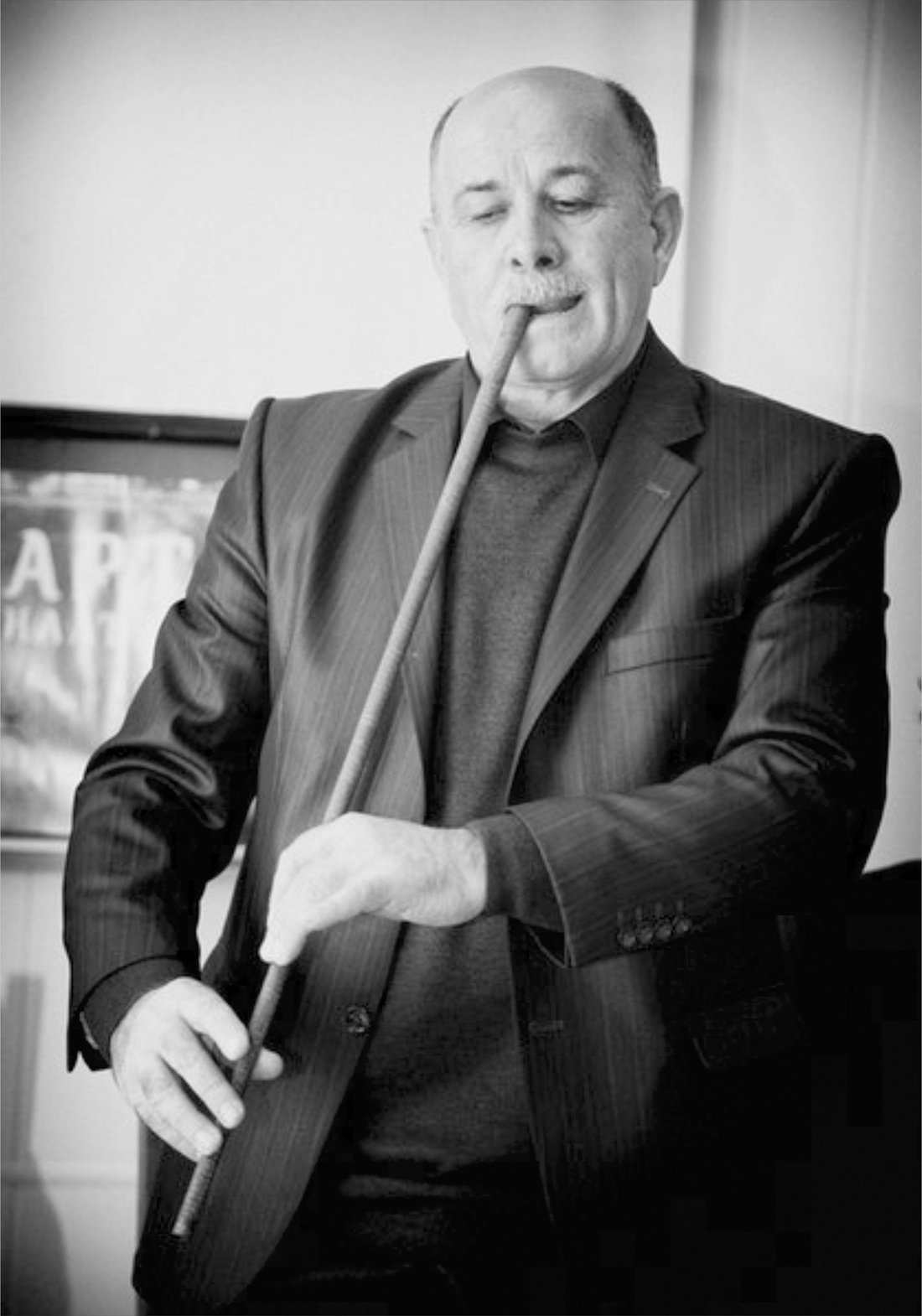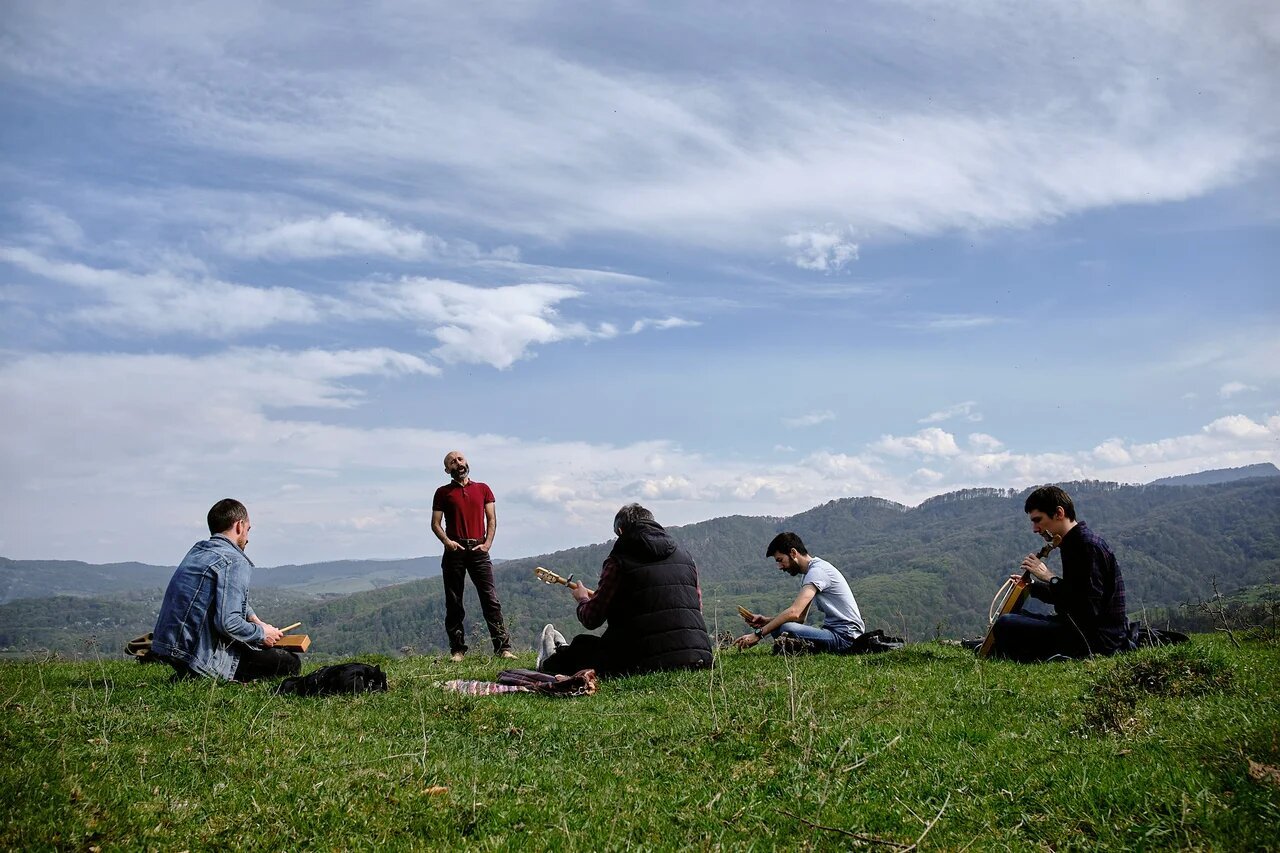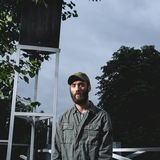
Zamudin. Photo: Elina Karaeva
These are mostly musicians of the older generation who know traditional songs directly from their families and artists of the past who they witnessed in person. They perform Circassian music without refreshing it in any way as they are the last keepers of their ancestors’ legacy. Some do not see themselves as ‘real’ musicians because they are not conventionally trained and even feel ashamed because of it. And others, especially young folk-performers are against being viewed as musicians due to their contempt for the official scene. Countless performers like this are not visible beyond family circle and do not have albums or videos (except Instagram stories which Caucasian people are very fond of).
One of the most influential, yet paradoxically little-known musicians from underground is Aslanbech Chich from Adygea. While most traditional artists there decided harmonica to be a national brand instrument and honed skills with it, Chich stayed faithful to nearly forgotten shichepshin. This is a violin with usually two or three strings which was used for the majority of Circassian music until the middle of the XX century. Chich didn’t persuade fame and recognition, his natural environment was gatherings with friends and performing for them in the style he inherited from elders.
Aslanbech Chich would remain as the unrecognized genius of old music who didn’t conform to modern times if not for another enthusiast of Circassian music, Zamudin Guchev. He moved from Kabardino-Balkaria to Adygea because in the 1970's it was seen as an oasis for traditional culture. The acquaintance with Chich defined the path of Zamudin since then.
‘Chich was a virtuoso, his performances were stunning — they were both easy and fascinating to listen to. Though he lacked any teaching capacities. The master could not communicate nuances of what he does and to pass it to others.’ Eventually Zamudin started not only singing and playing shichepshin, but also craft instruments himself. Since 1980’s he has taught children and teens all facets of traditional music including collective performing, instruments making, Adyghe ethics and aesthetics. His main project is an Ensemble Of Traditional Singinging And Instrumental Music Жъыу (Zhyu/Jiu) which performs songs from archives as close to the original as possible.
Жъыу was not a regular ensemble, rather an artistic community or music residency. Its members carried this experience to create their own centres for folk-music and gathered into new ensembles while frequently rejoining as Жъыу. By 2012-15 Жъыу are at the forefront of Circassian underground. Though their popularity is not on par with mainstream singers, their influence on small and loyal audiences was immense. Adyghe traditional instruments and songs could be now heard everywhere among Circassians. Most contemporary musicians are either trained by Zamudin or at least were inspired by his numerous projects. One of the prominent Жъыу members is Zaur Nagoev (Nagoy) — a charismatic singer, instrumentalist and kind of a rock star of Circassian traditional music. Zaur went beyond the reconstructionist approach to archival recordings and developed a unique singing and performing style. This gained him credit for
modern jeguako. Discovered and recorded by Ored Recordings, Zaur Nagoev becomes a notable part of Russian independent scene making appearances at Moscow new and experimental music festivals pushing his performance to some place between concert and folk stand up.
In Turkey, which officially counts more Circassians than in their historical habitat, musicians started to think about going on stage, tv and recognition among wider public just recently. Adyghe performers in Turkey play music exclusively within their community. That’s why it still naturally intertwines with daily routine and has no need to be artificially reconstructed. While Circassian weddings in the Caucasus of the last twenty years look as a huge dinner with invited pop-stars, in Turkey people still arrange traditional festivities where food is far from leading the process. Harmonica is played several hours straight, and dancers, singers and percussionists are the same people. So in diaspora the performance of traditional music is less of a concert and more of a ritual and celebration.
For Anatolian Circassians performing music signifies their national and cultural identity, a way of resisting the assimilation. Being isolated for a long time, Circassian music in Turkey has transformed into a new dialect drifting away from Caucasus origins. Adyghe people were consciously avoiding Turkish, Kurd and Laz influences. That is why one won’t find in Adyghe music popular instruments of that region — saz, bağlama, zûrna. They mostly play German Hohner diatonic harmonica and use пхацыч (pkhatzych - ratchets) as the only percussion.
Besides harmonica, Guchev’s impact on Turkish diaspora can be seen in
more frequent application of shichepshin.
A unique Circassian style was also formed in Syria and Jordan, gaining a lot from classic Arab music. And as in Turkey, Circassian music in those places was developed as a dance genre. One outstanding feature of Jordan and Syrian styles are that even
ritual melodies for festivities sound calm and contemplative. Such hermetic and self-sufficient tradition in the diaspora lets music be well preserved, but slows down emerging of new ideas and directions. The latter starts to be imported from history which can eventually lead to standardizing of all Circassian music.





